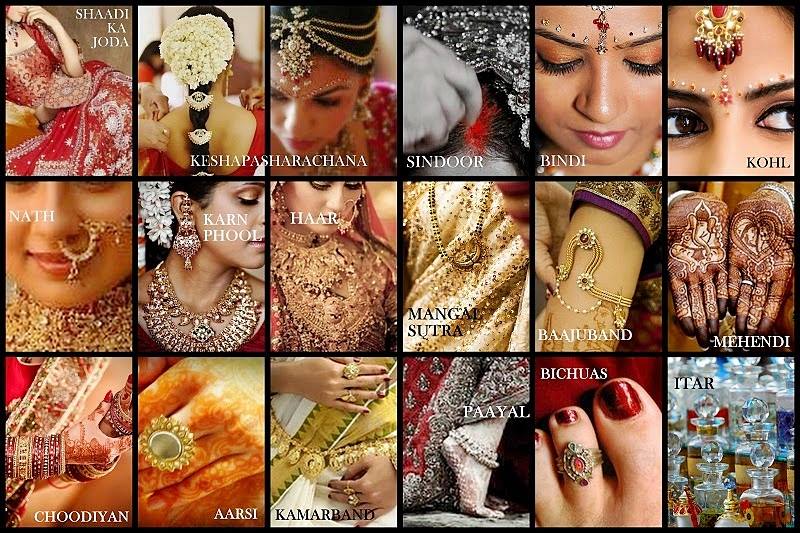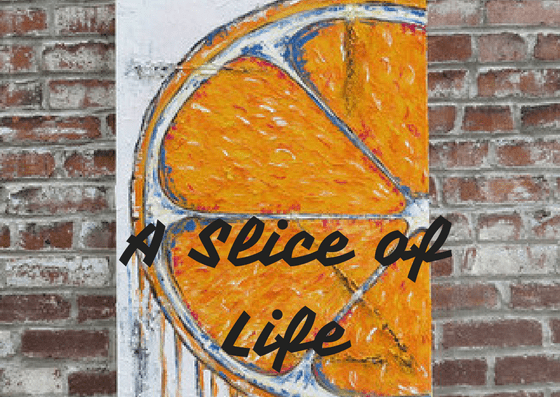In Hindu mythology “sixteen shringaars” correspond to the sixteen phases of the moon, which in turn is connected with a woman’s menstrual cycle. It is believed that Solah Shringaar helps to nullify the negative effect of that cycle. It is a cluster of sixteen steps for the holistic beautification of a woman’s body. From head to toe, no area is left untouched, encompassing the sensuous and the erotic aspects, informs Ruchira, in the weekly column, exclusively for Different Truths.
Since ancient times, Indian scriptures and epics have laid a good deal of emphasis on the beauty of the human body especially the female. The female anatomy is considered to be the epitome of loveliness grace and beauty. This idea led to the development of concepts of Erotica and sensuality. These were inscribed in legendary texts like the Kamasutra. The pivot point in such texts is always feminine beauty and its sensuous aspects. Likewise, the concept of Solah Sringaar is also replete with sexual (and sensuous) connotations. In Hindu mythology “sixteen shringaars” correspond to the sixteen phases of the moon, which in turn is connected with a woman’s menstrual cycle. It is believed that Solah Shringaar helps to nullify the negative effect of that cycle. It is a cluster of sixteen steps for the holistic beautification of a woman’s body. From head to toe, no area is left untouched.
The word Shringar incorporates Shri, one of the myriad names of Lakshmi – the goddess of wealth, beauty, luck and prosperity. It is generally related to Indian (read Hindu) wedding. This rite of passage signifies complete womanhood. Solah Shringar is a heritage passed down from one generation to the other. Its objective is to adorn and bestow maximum quantum of beauty, grace, and charm on the bride-to-be during the most important event of her life. Other than weddings, solah shringaar was also meant to be accessed to during major festivals and religious activities.
Now all of you modern PYTs (pretty young things) do take a look at what Solah Shringaar is all about:
Countdown – Ceremonial Bath
The ceremony begins with a special bath of the bride. First, the bride’s hair is treated with aromatic hair oils. Then the hair is washed with a mixture of indigenous herbs namely Brahmi, Shikakai, Aloe Vera, Bhringraj, Amla, etc. Next, a concoction of oil, milk, turmeric powder, sandalwood powder, gram flour and some fragrant herbs is applied on the bride’s hands, arms, legs, and face. These are collectively known as Ubtan. You can consider them equivalent to modern day Facial or Spa. The bride then takes a proper bath to wash off these herbs and comes out with a radiant, aromatic skin.
oils. Then the hair is washed with a mixture of indigenous herbs namely Brahmi, Shikakai, Aloe Vera, Bhringraj, Amla, etc. Next, a concoction of oil, milk, turmeric powder, sandalwood powder, gram flour and some fragrant herbs is applied on the bride’s hands, arms, legs, and face. These are collectively known as Ubtan. You can consider them equivalent to modern day Facial or Spa. The bride then takes a proper bath to wash off these herbs and comes out with a radiant, aromatic skin.
Kesha-pasharachana
After the bath, the bride’s hair is styled and adorned with flowers and jewellery. In some faiths and regions, brides have to have their leave their hair untied as it is believed that a woman can fascinate her man with the beauty of her cascading dark tresses.
Gajra
This is a fragrant string of garden fresh flowers. It is by and large crafted with all sorts of aromatic flowers namely jasmine, juhi or mograand is worn both on the bun as well as the plait.
Mang-Tikka
Generally made of gold, silver and precious stones, it is worn in the center parting of the hair and dangles on the forehead. Another variation of Mang-tikka has an extra chain which is tied along the hairline. Yet another variety, the Mandoria consists of a strand of pearls, tied across the forehead on either side. Mostly worn by Maharashtrian brides. The Bengali version is known as Tikli.
This is a red colored powder (an oxide of mercury) that is applied on the parting of a bride’s hair. This is the most sacred symbol of matrimony in India, similar to the rings in Christian weddings. In a solemn ceremony called sindoor daan, the groom applies vermillion on the bride’s head. It symbolises his authority over her future life.
Bindi
This has a strong religious significance and is a sacred symbol of a married woman. Traditionally, it is the circular red dot of vermillion powder placed in the center of the forehead. However, the brides further tend to decorate the bindi with red and white dots around the forehead and along the eyebrows. The bindi symbolises dedication towards her husband or and strength in a marital relationship.
Kajal is black eyeliner (read Kohl) that is meant to highlight and accentuate a bride’s beautiful eyes. Kajal was traditionally prepared from the soot of earthen lamp lit with a wick placed in clarified butter.
Nath
The nose ring (or pin) happens to be a highly traditional and ethnic ornament. Generally studded with pearls, diamonds or other it is worn on the left nostril. In some areas of India, the nose ring is never removed and is considered another visible sign of matrimony. South Indian married women, chiefly Tamilians wear their nose pins on the right. For special ceremonies, special nose rings are worn with a chain, which is tied to the hair behind the ear.
Ear Ring
They generally consist of elaborately decorated large round ornaments. The weight of these ornaments is often supported by a chain passing over the crown of the head. Some heavy earrings hang from the lobe and end in a large pendant.
Neck Ornaments
Necklaces of diverse lengths, ranging from chokers to collars to filigrees and long chains hanging down to the abdomen are often worn plain or inlaid with pearls, gold pieces, and gold beads. Necklaces made from flowers are also worn by brides in various states. The most vital neck jewellery is the mangalsutra, which is considered a sacred symbol of matrimony. Incidentally, this is ceremonially placed around the bride’s neck by none other than the groom. And it must be constantly worn till the husband breathes his last.
Arm decorations
Armlets worn on the upper arm may be studded with pearls or diamonds. The basic material is either gold or silver. Depending on the region where they belong to these are known as baajuband, pahunchi, et al.
or silver. Depending on the region where they belong to these are known as baajuband, pahunchi, et al.
Bangles & Bracelets
Ornaments worn on the wrist are of prime importance because they get noticed very easily. In most parts of India, a variety of bangles and bracelets are worn by the brides. Bangles may be made of iron, ivory, green or red glass, ceramic, gold, and other metals depending upon the local customs and beliefs and also the resources of a particular family.
Mehndi or Henna
The hands and feet of the bride to be are decorated with intricate designs made from henna. This natural dye is obtained from the leaves of the widely grown plant. This particular shade of color is considered to be auspicious – and is replete with emotional, sexual and fertility-related concepts. Henna signifies the essence of love and applied on the hands and feet of the bride, to strengthen that bond of love.
Rings and Hathphool
A bride wears eight rings in both her hands, which are attached with a central flower or medallion that covers the upper part of the hand. This is familiarly known as Hathphool. In a Hathphool, three of the chains pass to a bracelet and five to each of the fingers where they are secured by rings.
Aarsi
These happen to be the two thumb rings worn by the bride. It has a mirror embedded in it. This allows the bride to have a glimpse of herself as well as her groom since during wedding rituals the bride must wear a long veil which prevents her from taking a look at her partner’s face.
Waistband – Kamarband or Kardhani
This is a beautifully designed gold or silver belt worn around the waist of the bride. It is often studded with beautiful gems. The belt not just enhances the waist area but also helps in holding the saree in place.
Anklets or Payal
A pair of silver chains whose borders are fitted with clusters of tiny bells attached is traditionally by the bride before and during the wedding rituals.
The toe ring is a symbol of marriage and is commonly worn by the bride in southern and northern parts of the country. The rings may be simple or elaborate in design. Some of them even have bells attached to them. Toe rings are mostly worn on the second toes of the left feet.
Mahur/Aalta
This is a red coloured paint obtained from a certain species of plants. In regions like Bengal, Bihar, Uttar Pradesh, Assam, Odisha red lines are drawn along the outer border of both the feet. Wearing this is mandatory during the wedding followed by post wedding rituals.
©Ruchira Adhikari Ghosh
Photos from the Internet
#SolahShringaar #16StepsToDressUp #IndianDressingRituals #OrnamentsFromHeadToToe #IndianJewellery #SliceOfLife #DifferentTruths












 By
By

 By
By